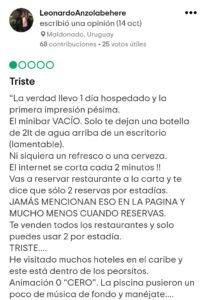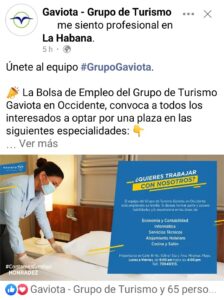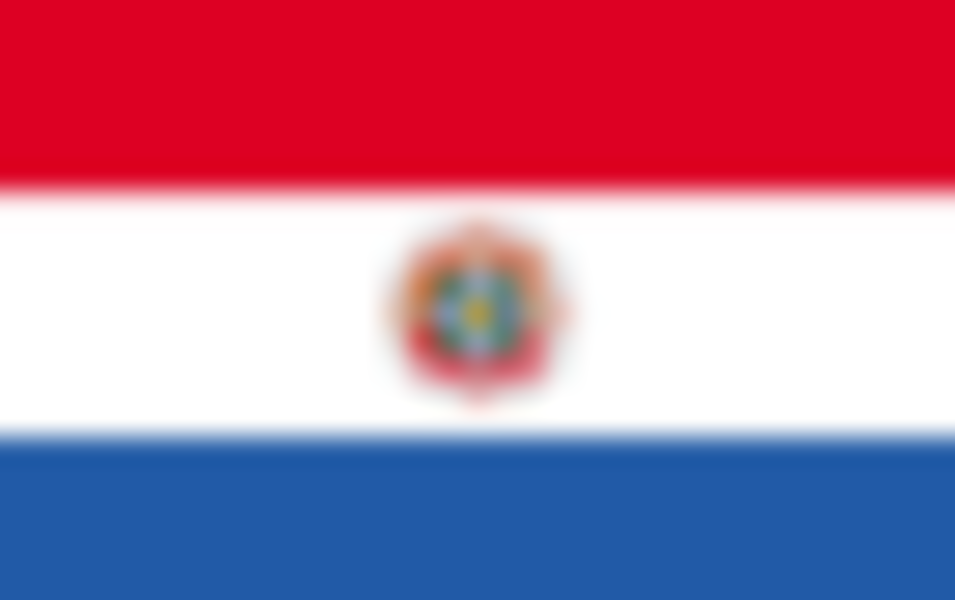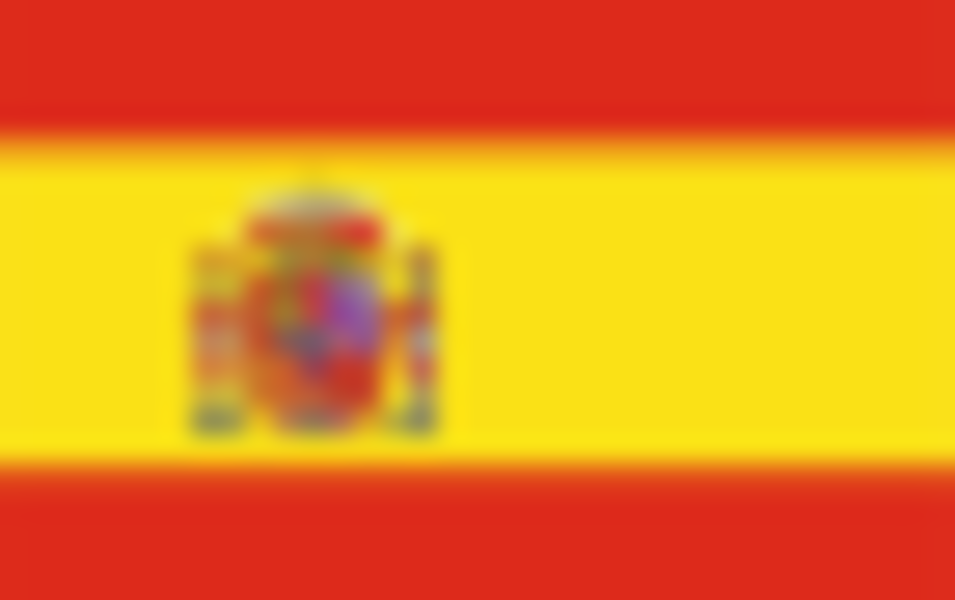HAVANA, Cuba. – Tania’s return to work after the pandemic was not how she imagined it. She is a former waitress at the Grand Packard Hotel that was among the few tourism workers that were not fired during the closings brought on by the health crisis.
She tells how, after her personal finances had grown dependent on the income from tips, she spent more than a year and a half waiting for things to return to “normal” in order to recover a standard of life that, for any tourism worker prior to 2019, was way above the median income of the rest of the state workforce, where many people depend exclusively on their low salaries.
Even though she kept receiving half of her salary without having to report to work, in accordance with existing labor laws, she could barely make ends meet to feed her two children in a country where life has become very difficult for people who have no access to large amounts of extra income or to the hard currency needed to purchase food and basic articles in a network of stores where national currency is useless.
“I was sent home with half my salary (some 1,500 Cuban pesos a month) but everyone knows that you can’t make ends meet with that, it you don’t have greens (US Dollars) you are doomed to struggle,” states Tania, who also explains that, although she was able to return to her job in the tourism sector, a few months later she decided to quit.
“I returned to work in August (2021) to do maintenance work and to prepare for the reopening in September (…), which meant a few more months living on the salary alone. I was confident that the tourists would arrive, but nothing happened, not in December, not in the following months, and then in April, I asked to be released from duty. (…) I was given the possibility of going to work in Varadero, but a girlfriend of mine who works there told me: ‘Girl, don’t bother coming here, things here are awful.’ You can’t make a buck because there are no tourists, and Cuban clients leave you nothing (…), right now, I am doing manicures, I buy items in hard currency and resell them (…). I don’t make what I did before, but while there are no tourists, I am not going back. Like me, most workers have asked to be released from their jobs (…). When you work in the tourism sector, you do it for the tips and for anything else you can get your hands on, because the salaries are miserable for how expensive things are,” states Tania.
Then there is Albert. He worked as a market specialist in Cao Coco from 2009 until January 2022, at which time he decided to leave the tourism sector for the same reasons that Tania left: the decrease in the levels of income compared to the years prior to the pandemic.
The approximately US$2,000 he received regularly every month from commissions on service contracts signed with the clients between 2014 and 2018, suddenly vanished to almost cero after the island reopened to tourism, and also as a result of cash being eliminated as an acceptable form of payment at the main tourism poles in the country.
“Every month, I would take home no less than US$2,000, there were months I would work with large groups, I signed good contracts and earned US$5,000 and US$6,000 (…). My wife earned less, but regardless, it was another US$1,000 plus every month (…). We lived in Ciego de Ávila and bought this house (in Morón) and went all out refurbishing it so we could rent it out: we put in air conditioning in every room, in the living room, a bathroom in every bedroom, a swimming pool, a three-car garage, but we weren’t counting on this debacle,” states Alberto, who after quitting his job, as did his wife, has decided to sell all his properties and migrate.
“Truly, I never thought about leaving the country. Before 2018, my life was good. I didn’t even need to travel to Havana. But things have gotten very bad. Here in Morón, the people who were renting sold everything in order to leave (…). Those who rent here were working in the keys and with that money, they made improvements to their house. Everyone is asking to be relieved from work duty. My office is empty. They will hire anyone who shows up in order to cover the vacancies. It doesn’t matter if they took studies in tourism or not. The hotels are empty, and also without workers,” states Alberto.

Absence of tourists as bad as the brain drain
According to data published by the National Office of Statistics and Information (ONEI, by its Spanish acronym), between January and June 2021, Cuba welcomed only 114,460 international tourists, an 88.3% drop with respect to 2020, when the decrease in arrivals was notable already, with only 985,199 visitors.
Although at first, such poor results were blamed on a contraction in sales worldwide and a notable take-off was predicted for 2022, the truth is that Cuba remains behind other Caribbean destinations. ONEI’s most up-to-date statistics indicate that the crisis in Cuba persists, with a little more than 1 million tourists arriving in the island this year to date. Most of these tourists –more than 70%, according to Cuba’s Ministry of Tourism (MINTUR) statistics- have come to the island from the Russian and Canadian markets. Several MINTUR officials that CubaNet consulted stated that tourism from these two markets are not profitable, because of the type of tourist they generate and the very nature of this travel which is priced very low through promotional sales.

“Not only are we not getting the number of tourists that we anticipated, but also the profit margin is very low in comparison to 2018, and even 2020,” states Lionel García, a sales specialist with the Gran Caribe hotel group. “We are working to recover a market that was lost to the pandemic, and that has forced us to lower the prices, at times even with cero profit, (as with) Russian tourism, where the cost of transportation alone takes up almost 100% of the package value (…). This is a median-term strategy, but it has had very negative consequences, and one of them is the brain drain (…). A tourist who is not willing to pay another penny over what he or she paid for the travel package, will not leave a tip, especially when the package is of the “all-included” type, and where cash transactions have been barred (…). The worker exodus also creates a domino effect in that the greater the number of workers that leave, the heavier the work load becomes for those who stay. The level of exhaustion also rises because double-shifts must be scheduled until a replacement is found. Truly, no one wants to work for the tourist sector under these conditions while being paid a lousy salary. The workers who remain, quit a few days later,” states García.

If starting in 2009, with the policy of dismissals adopted by the Corporate Administration Group of the Armed Forces (GAESA, by its Spanish acronym) which saw 10,000 tourism sector workers fired, which, in turn, caused an increase in staff workload at the precise moment when the number of tourism facilities was rising, today, the brain drain not only threatens to paralyze or slow down numerous tourism services, but also to make the quality of the services worse, an already notorious reputation long before the pandemic.
Elizabeth Velázquez, former sales director at several tourism facilities belonging to the Gaviota S.A. Group, stated to CubaNet that at least at the facility where she was employed until recently, the lack of workforce is becoming a nightmare: 60% of the workforce has quit. This is the reason why many hotels have closed off certain guest-room blocks completely, and why guest complaints for mismanagement and poor services are on the rise.
“We have several hotels in Varadero, Cayo Coco and even here in Havana that are servicing clients only because they are rotating the same workers,” states Velázquez. “They finish cleaning one, and then go to the other, sometimes making the same salary (…), sometimes we give them stimulus incentives in the form of groceries and cleaning supplies, but regardless, they quit. It came a point that I had to say “Stop!” because my phone kept ringing (…). Rooms not cleaned for days, dirty bathrooms, green moldy water in the swimming pools. Hotels where people wake up to no water because no one in the maintenance department is watching, not the water, not the boilers, not the air-conditioning system,” explained the former executive.

Without tips, blackmailed and exploited
According to figures obtained which CubaNet compared with information provided by several MINTUR sources and with details published in several publications of the ministry, of the 86,300 workers that the Cuban tourism sector employed until 2009, at present only 60,000 remain, of which an estimated 3,000 workers are non-state workers.
If between 2009 and 2020, and after the GAESA dismissals, the number of workers remained stable at 70,000 workers, in the last nine months there has been a continuous decrease which will leave the tourism sector without a workforce in 2023, if this decrease continues at the same pace.
Interviewed by CubaNet on condition of anonymity, a professor of the University of Havana’s School of Tourism admitted that the brain drain was worrying authorities so much that those in charge in the tourism sector are considering not only increasing the compulsory social work period for graduates of the Armed Forces (FAR, by its Spanish acronym), but also forcing them to remain in the tourism sector for a minimum of five years without the option of requesting transfers to other sectors, or leaving the country.
“In a manner of speaking, it would be like a military pledge prior to being awarded their degrees,” states the professor. “It would apply not only to tourism students graduating from FAR, but also students in other careers, as well as to graduates who fill positions in tourist facilities or GAESA companies (…). I think it will work because [for the graduates] it’s better than being assigned to a military unit. The problem is that the sector will never have a stable and well-qualified workforce. By the time the workers acquire all the experience, they will leave, because they will have tolerated many years of exploitation, which means that the problem of poor-quality services will never be solved.”
“Tips are a problem, as are shortages and poor working conditions, but the brain drain in tourism has coincided with the other exodus that is taking place in Cuba,” states a MINTUR employee who spoke to CubaNet under condition of anonymity. “Great part of the present exodus is made up of people who can defray the costs of the journey to the southern U.S.-Mexico border, and prior to the pandemic, the tourist sector had the largest concentration of well-paid employees, those who were able to buy a car and purchase a good house, and now that these individuals are facing a crisis, they have decided to sell and migrate (…). It’s no secret that people work in the tourism sector not for the salaries but for the extra income, legal or illegal.”

For Odalys Ortiz, cultural host of a hotel in Varadero, the abuse and blackmail she suffered during the pandemic made her quit tourism forever.
“If you didn’t want to go to the isolation centers, they would dismiss you automatically,” states Ortiz. “Then, you could not return to work in the tourism sector. I accepted this blackmail and I stayed because I had no other options. Those were the most horrible days of my life. I cleaned rooms day and night and into the early hours of the morning, working in the kitchen, taking food up to those who were sick, being treated rudely, because if you complained you were told you would not return to the tourism sector.”
According to tourism authorities’ statements, 8,200 tourism workers were sent to the isolation centers as service personnel, a “mission” that was far from voluntary inasmuch as compliance was the condition to remain in the sector.
“It would be good to ask just how many of the workers sent to the isolation centers during the COVID-19 pandemic have quit after the much awaited “normalcy” never came,” says Fabio, one of the “volunteer” workers. “At Villa Tortuga in Varadero alone, all the employees are out on the street. Some of us because we quit, others because they simply got tired and were punished for ‘abandoning their mission’. That’s the effrontery here. Those of us who accepted to go (to the isolation centers) did so because we thought it was worth it in order to keep our jobs; in truth, we made a lot of money, but we never imagined this. We sacrificed all those months, for nothing. I waited one month, two months, and then I left, because even if tourists arrive, the ones who come to Cuba are dirt poor and they leave nothing,” states Fabio.
The strategies to attract a workforce do not work.
Far from making plans to keep the workforce, companies like Gaviota S.A. and Gran Caribe concentrate on publicity campaigns in order to fill vacant positions; however, in the opinion of executives and directors, the strategies are not working.
“It’s not just because contract intermediaries are still kept, an error we keep repeating, but it’s also because there is no other incentive but the salary,” states a Gaviota S.A. employee. “There used to be an incentive system which wasn’t legal, but no one said anything about it. Now, that is over. It is totally prohibited. No Cuban or foreign executive is authorized to withdraw cash, nor can dollar or convertible-currency transfers be made to any employee. The few incentives that are still in effect are those that a foreign executive can make out of his own pocket, and that only benefits his closest employees.”

Our source continues: “The brain drain is such that we have chosen to attract a new workforce and not keep the existing one. Those newly arrived accept the work conditions, and that’s that; he or she will stay with us for a year or two and then leave, but we have no other options (…). People who worked in the tourism sector during the good years don’t want to go through this new period of crisis. Some people are lucky and found themselves similar positions in the Dominican Republic or in Cancun because they are very good workers and the foreign companies want them there, but that is leaving us with the worst employees, and we are never going to get ahead.”
In the best of years (2010-2017) and just before the start of the pandemic, Tourism represented between 7 and 10 percent of Cuba’s Gross Domestic Product (GNP, by its English acronym, and it claimed an average of 19.1 % of the export of goods and services.
With more than US$30 billion in income over the last 20 years, revenue from tourism accounted for 46% of total annual imports annually; the sector also employed more than 65 of Cuba’s available workforce, creating 1.7 indirect jobs for every worker employed directly.
In 2017 alone, which experts consider the “golden year” for tourism in the island, a total of 4,689,898 visitors arrived in Cuba, a number that, if it had been sustained or increased, would have consolidated Cuba as the vest vacation destination in the Caribbean.
Today, things are different and not at all optimistic. Hurricane Irma in mid 2017 and the health crisis caused by the COVID-19 pandemic, added further troubles to an already-impoverished Cuba due to the terrible financial management of Raúl Castro’s administration, the bankrupt and debt-ridden situation that Miguel Díaz-Canel inherited, the excessive control of the Communist Party over economy decisions, anti-government demonstrations by the Cuban people, and the absence of a recovery plan that can eliminate bureaucratic obstacles and the fear of private initiatives as potentially causing political change. An avalanche of adversities and blunders that have floored the expectations that larger tour operators with respect to Cuba, which were encouraged by the Obama administration’s thaw toward the island.
Recibe la información de CubaNet en tu celular a través de WhatsApp. Envíanos un mensaje con la palabra “CUBA” al teléfono +1 (786) 316-2072, también puedes suscribirte a nuestro boletín electrónico dando click aquí.
Fuente Cubanet.org




 Argentina
Argentina USA
USA Paraguay
Paraguay España
España Israel
Israel














